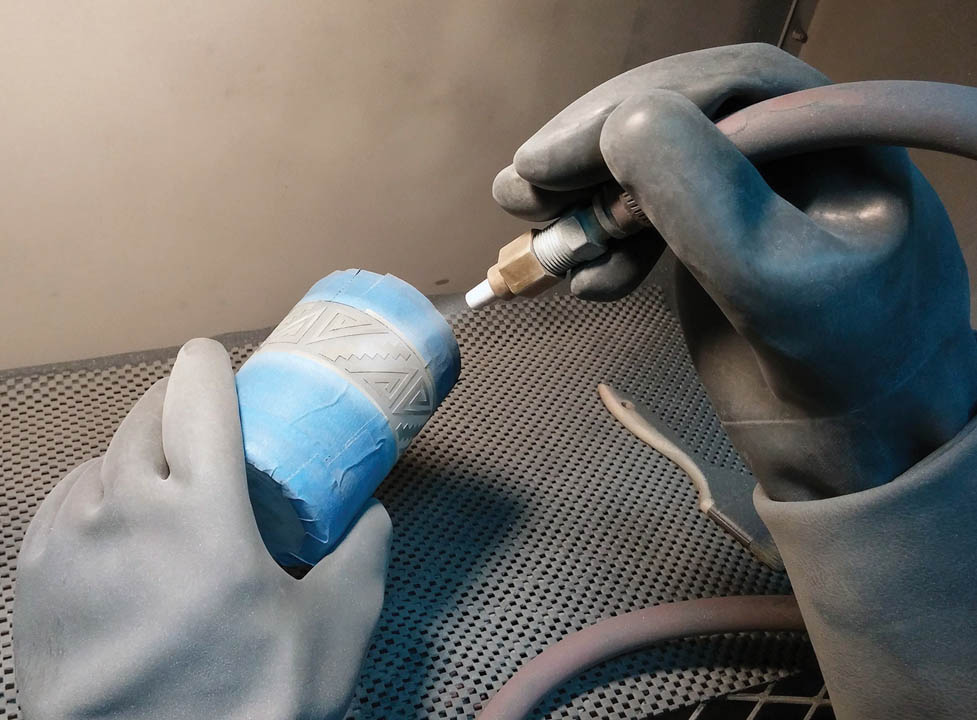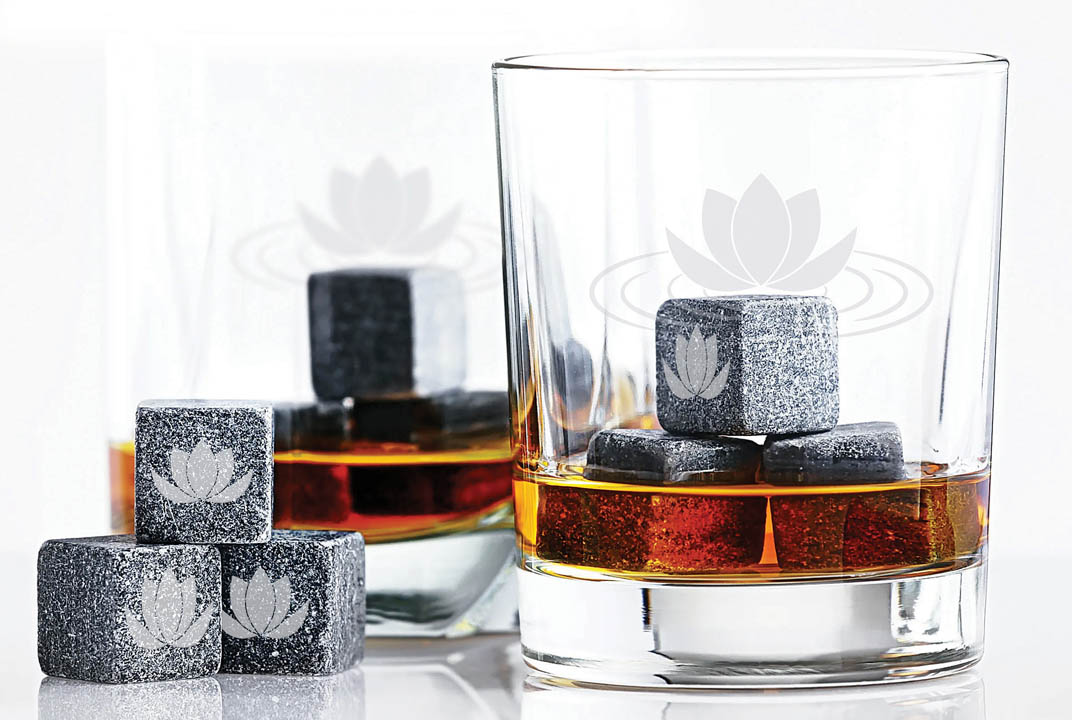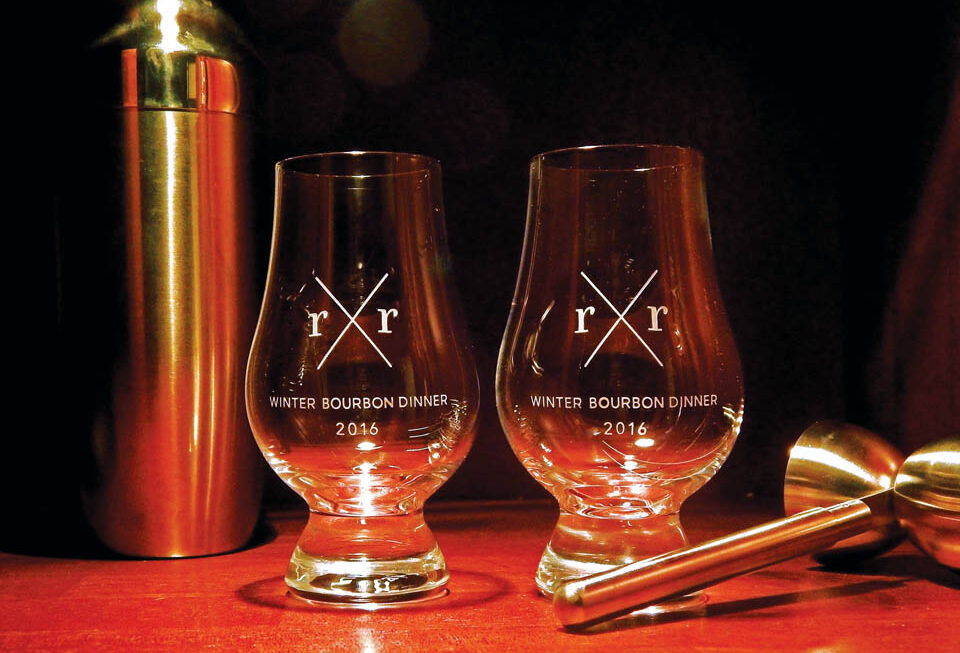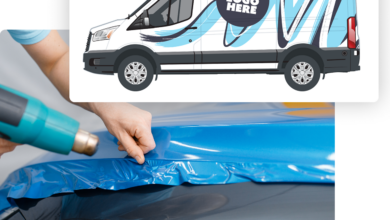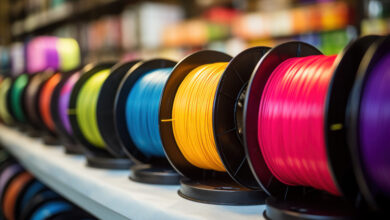What advice can I offer to anyone wishing to get started in this line of business? I actually had to think about that for a while. First of all, if any of you know me, I am a stickler for details and proper nomenclature. Having said that, I, of course, still would not call it sandcarving, as none of us are using sand in this process of abrading the surface of glass. We are using either silicone carbide or aluminum oxide; therefore, I call it abrasive blasting. But, I am getting ahead of myself, because if you are contemplating getting into this line of work, you may not even know what I am talking about.
Needless to say, my viewpoint in this business is probably a bit different from many others, as I am, by now, looking back at a span of 50 years in the glass business. My husband and I started way back when glass began its renaissance in this country. Yes, back in “hippie times” with a lot of experimentation going on and freedom of expression.
Supplies were hard to come by, and we often had to improvise and create our own, including equipment. Training was nowhere to be had, and we often taught each other. Many changes have taken place since the early 1970s. Companies were interested in manufacturing supplies and equipment we needed, and glass companies began to take notice of a demand for small glass shapes, which could be used for awards and recognition pieces. New technologies, like photo resist, made it possible to create ever finer detailed images, and the best part, it could be used by people who were not necessarily artistically inclined to create artwork themselves.
The whole industry of abrasive blasting peaked in the late 1990s to mid-2000s and since has leveled off, for various reasons. I have seen many changes during all these years: We had booming economies and recessions and a market collapse, not to mention COVID-19. The small manufacturers we have “grown up with” have sold out to larger and larger companies, and manufacturing went offshore. Now, we are entering a whole new dimension with the current economic situation. So, you want to consider getting into this line of work? What should you do?
Get started
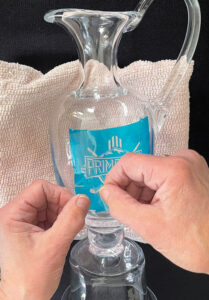 First of all, you should do your homework. That begins with asking yourself a few questions. Why do you want to do this? Is your business idea doing the blasting work exclusively, or are you thinking of adding this line of work to an already existing awards and recognition shop?
First of all, you should do your homework. That begins with asking yourself a few questions. Why do you want to do this? Is your business idea doing the blasting work exclusively, or are you thinking of adding this line of work to an already existing awards and recognition shop?
If you do this as a stand-alone business, you can plan the layout of your shop differently from someone adding this to an existing shop. This type of equipment and work will always produce a certain amount of dust and should be kept away from sensitive machinery that other processes may be using. How much space will you have available? The answer to this question is going to determine the size of the equipment you may consider buying. Do you want to do only small items like awards, giftware, and barware? Or do you want to include signage, cabinet doors, and tabletops? Again, the answers to these questions will point to the equipment size you may purchase.
Most often, I recommend starting small, with a limited number of products instead of using the “shotgun approach” (doing a little bit of everything), which usually means a longer learning curve to get good at this craft as all products have their
own peculiarities to be discovered and to be mastered.
The good news is that today it is so much easier to get started with all of this. You now can use the full spectrum of the internet for your research, and there are a multitude of sources for all aspects of this work. Not to mention the magazine you’re reading now. They have articles and information available, including a schedule of trade shows which offer you the opportunity to meet with manufacturers and suppliers in person and attend hands-on workshops. It doesn’t get any easier than that. So then, what do you need to know to set your plan into action?
Plan for space
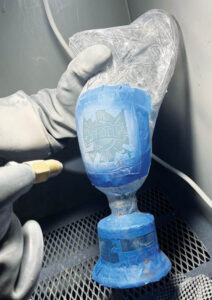 Again, you need to have a plan. Stand-alone business or add-on? How much space will you have available? What goes into the space? You will need room for a blasting set-up, which generally consists of a compressor, which is usually kept in a separate space due to noise levels. The blasting equipment consists of a cabinet (which comes in several sizes and configurations) with an attached vacuum/exhaust system and a blaster, which can be separate or, more often these days, will be attached to the blasting cabinet. You will need table space for prep work and a separate table surface for clean-up work. Access to running water for clean-up work is also helpful.
Again, you need to have a plan. Stand-alone business or add-on? How much space will you have available? What goes into the space? You will need room for a blasting set-up, which generally consists of a compressor, which is usually kept in a separate space due to noise levels. The blasting equipment consists of a cabinet (which comes in several sizes and configurations) with an attached vacuum/exhaust system and a blaster, which can be separate or, more often these days, will be attached to the blasting cabinet. You will need table space for prep work and a separate table surface for clean-up work. Access to running water for clean-up work is also helpful.
Another space is needed for the production of photo-resist stencils. This area needs to be a darkroom-like area with access to water and a tabletop for the exposure unit and drying chamber. A space for a computer and printer is also necessary. One should also not forget a storage cabinet to house materials for production and glass items to be worked on. All of this you can research online. It is best to align yourself with a one-stop supplier who can deliver all necessary components to you. These companies have trained staff who can help you with questions and problem-solving.
For your glass blanks, you may need to work with a company other than the one-stop suppliers mentioned above. They do have some selection of glass blanks, but not to the extent that companies that exclusively manufacture glass have to offer. There are literally thousands of shapes and sizes of glass awards. Here, it is also good to note that even though there are so many available, do not make the mistake of offering your customers the whole variety of selection: the more choices you offer, the harder it is for a client to make up their mind as to what they want.
Know your market
Very important: market research! Will you be the only one in your area offering this service? Where are the closest competitors? What about online shops? You need to investigate all these possibilities so that you can get a feel for where you may want to establish yourself in terms of pricing. Much of the price level will depend on the type of products you want to offer. Glassware is generally a lower-priced item than an award made from crystal glass. Who are going to be your customers? Schools and clubs or corporations?
There is some uncertainty right now as we enter an unknown economic era with tariffs on products from other countries, and it is very difficult to get a firm grip on the cost of materials. I am getting notifications left and right about price increases and the inability to predict consistent pricing. This will make it a bit difficult to give quotes to your customers.
I am in a situation right now where I have to request a price from my suppliers each time before being able to give a price to my customers, because they are constantly changing. It is a bit unnerving, but maybe it will work itself out. Until then, you must do your due diligence every time you prepare a quote. I do quite a few large projects like shower enclosures, etc., and the resist material I need to do those has gone up by 50% in some cases.
Another aspect that is affecting pricing with our work is shipping costs. Right now, it is almost at a point where heavy items, such as the abrasive we use, cost more to ship than the abrasive itself. Luckily, it is a material we get to use over and over again for quite a while. So, you see, there is quite a bit of homework to do before making the decision to go into this line of business.
Here is a list of the individual components you need to research, outside of your budget and space requirements:
- Equipment: Compressor, blasting cabinet including pressure blaster and exhaust system.
- Consumables: Items that need replacing from time to time, depending on how frequently used: blasting nozzles, abrasives, resist materials, tapes, and cleaning supplies.
- Resist materials: Photo resist, hand-cut resists, and laserable resists.
- Glass blanks: Suppliers for drinkware, award blanks, and plaques.
- Gift items: Paperweights, clocks, desk accessories, ornaments, and bar accessories.
- Creating artwork: Using programs like Adobe Illustrator or others to create your own, using clip art collections, or hiring a graphic artist to help you.
- Copyright laws: Educate yourself about the laws governing the right to use artwork that others have created.
- Techniques of blasting: There are only three techniques: surface blasting, multistage carving, and multistage shading.
- Pricing: Where do you want to position yourself, and which clientele will you be serving? This will help you in marketing yourself to the right venues. How much of a deposit will you require to start the work, and when is the balance due? It is a good idea to quote a design fee and charge that because we know that clients can change their minds and not do a project, and you should not be left without pay if you spent time designing a project.
- Policies: Make sure you have written out clear policies explaining how you handle a job and how you expect to get paid. Do not start a job without having your client sign off on the details of the job. Spell out all the details, and then there is no room for disagreement.
Again, you can find articles on all these topics, which will give you all the details you need to know. By now, your head is probably spinning with lots of thoughts. Tackle these topics one at a time, and you’ll be on your way. Good luck!
